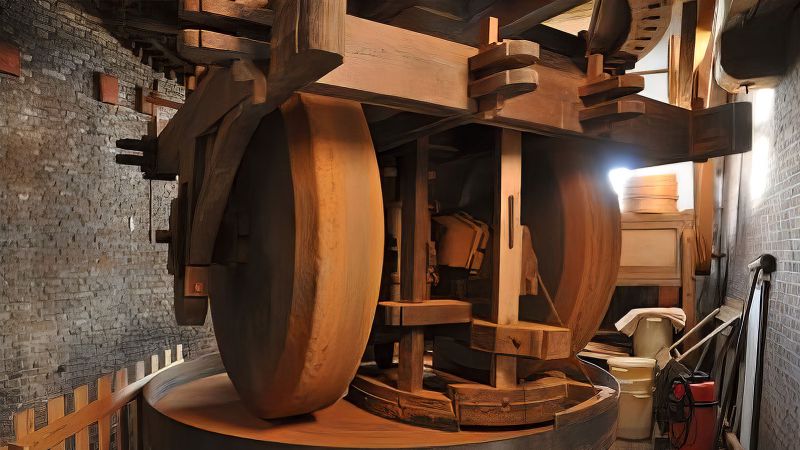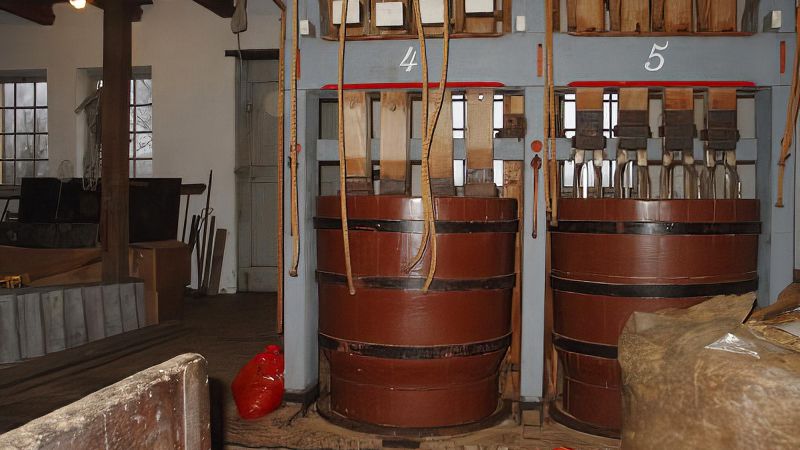De Ster is stage mill with an a stone base and a octagonal upper part. This means that the sails do not reach to the ground but can be reached from a stage or gallery. The mill is build on a square brick base with dimentions 9,4 m x 9,4 m and a height of 6,0 m. On the brick base stands the upper part, which starts with an square shape and end in an octagonal shape. The stage is on a height of 10,4m above the ground. On the upper part a rotating cap is placed, the windshaft is placed in the cap. The upper part and the cap are covered with reed.
The sails are of the common sail type. The welded steel stocks are manufactured by Bremer from Adorp en were made in 1968. The sail span of De Ster is 22,0 m. The cast iron windshaft is coming from the demolished mill in Oudenhoorn and is casted in 1876 in 's Gravenhagen by the foundry De Prins van Orange. The mill has a flemish brake consisting of four pieces and is operated with a lever. The cap rotates on a bearing consisting of 40 elm wood rolls and the cap is rotated with a windlass.
The mill is equipped with:
- A pair of edge runners for grinding of spices
- Five vats with each four stamps with knifes for grinding of snuff tobacco
- Two pair of spice stones

Edge runners
The edge runners are located in separate extension of the mill and is driven by the camshaft. The camshaft rotates just above the first floor and also drives the stamps. The edge runners consist of two granite runners which rotate on a cast iron platform. The runners have a diameter of 1,85m and a thickness of 40cm. Each runner has a weight of 2.5 metric tons. Next to the edge runners is a hexagon reel separator used for sieving of the spices. The gear ratio between the windshaft and the edge runners is 1:0,4. This means that the speed of the edgerunners is normally between 6 and 8 rounds per minute.

Vats
The stamps and the vats are driven by the camshaft. The camshaft is driven by means of a long axis by the windshaft. For each stamp three cams are mounted on the camshaft such that on one revolution of the camshaft each stamp is lifted three times. On each stamp are two knives mounted that cuts the snuff tobacco. The gearratio between the camshaft and the windshaft is 1:0,91. In this way, each minute between 160 and 200 times a stamp is lifted and dropped into the vat.

Pairs of spice stones
On the stage floor two pair of cullen spice stones are located. The stones have a diameter of 1m. The stones are used for grinding of spices. Each pair has a oscillating sieve. The pair is driven from the axis with a gearratio of 1:6,69. This means that the runners have a speed between 100 and 130 rounds per minute. At the floor above the stage a sack hoist is placed for transport of spices.
